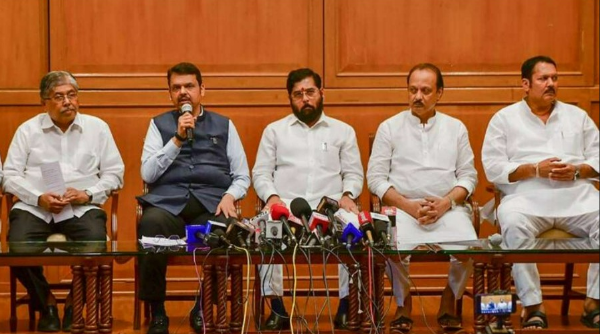Maharashtra govt to implement revised pension scheme following Centre's approval of Unified Pension Scheme
26 Aug 2024 15:03:34
Mumbai, Aug 26: In a significant development, the Maharashtra government announced that it will implement a revised National Pension Scheme (NPS) in line with the Union government’s Unified Pension Scheme. This came just 24 hours after the Union Cabinet, chaired by PM Narendra Modi, approved the Unified Pension Scheme (UPS) for government employees, marking a significant step towards ensuring an assured pension for central government employees on Saturday.

In the state cabinet meeting chaired by Maharashtra CM Eknath Shinde, the Mahayuti government announced a similar revised NPS for around 8 lakh employees of Maharashtra in a cabinet meeting on August 25. This will be implemented from March 1, 2024 onwards.
- Those covered under the NPS who opt for revised scheme will receive a guaranteed pension equal to 50% of their last salary plus the dearness allowance.
- On the death of the employee, 60% of the employee’s pension will be paid to the next of kin (family pension).
- The government will also bear the losses for market-linked investments in the NPS.
The cabinet decision will also apply to employees of recognized and grant-aided educational institutions, non-agricultural universities and their affiliated aided non-government colleges and agricultural universities that are members of the NPS. It will also apply to Zilla Parishad employees.
Last year, state government employees had gone on strike, demanding a return to the Old Pension Scheme. The NPS was introduced in the state in 2005, given the financial burden of pensions. The main concern of employee unions was that since the NPS is linked to the market, their pension fund carries the risk of uncertainities. Also, it was not linked to a base salary.
Therefore, the state had appointed a committee under retired IAS officer Subodh Kumar. In March 2024, after the committee submitted its report, the Mahayuti govt announced a revised NPS but there was no subsequent movement on the issue, prompting threats of another strike.
What is the Unified Pension Scheme?
It aims to enhance financial security and stability post-retirement of the central government employees. This scheme is expected to benefit 23 lakh central government employees. This number could potentially increase to 90 lakh if state governments choose to adopt the scheme, extending its benefits to a broader range of government employees across India. Interestingly, the Mahayuti government announced a similar revised National the UPS for around 8.3 lakh employees of Maharashtra in a cabinet meeting on August 25. Moreover, the central government employees have been given the option to choose between NPS (National Pension Scheme) and UPS. Choice once exercised will have no option of switching back.
Key Features
1. Assured Pension:
Employees who have served for a minimum of 25 years will receive an assured pension amounting to 50 per cent of their average basic pay over the last 12 months before retirement. For those with less than 25 years of service, the pension will be proportionate to their tenure, with the minimum qualifying service period set at 10 years. This is a significant shift from the NPS, where pensions were determined solely based on the contributions made by the employees and the government during the service period. Moreover, in the NPS, the pension amount depended on the amount invested in the market.
2. Assured Family Pension:
In the unfortunate event of an employee’s death, their spouse will receive a family pension, guaranteed at 60% of the pension that the employee was receiving before their passing.
3. Assured Minimum Pension
Employees with at least 10 years of service are assured a minimum pension of Rs 10,000 per month upon retirement. Notably, there is no such provision in NPS.
4. Inflation Indexation
Both the assured pension and family pension will be adjusted for inflation, ensuring that pension amounts keep pace with rising living costs.
5. Dearness Relief for Retirees
Similar to serving employees, retirees under the UPS will receive Dearness Relief based on the All India Consumer Price Index for Industrial Workers (AICPI-IW).
6. Lump Sum Payment on Retirement
In addition to gratuity, employees will receive a lump sum payment upon retirement. This payment will be equivalent to 1/10th of the employee’s monthly emoluments (including pay and Dearness Allowance) as of the date of retirement, for every completed six months of service. Importantly, this lump sum will not reduce the assured pension amount.